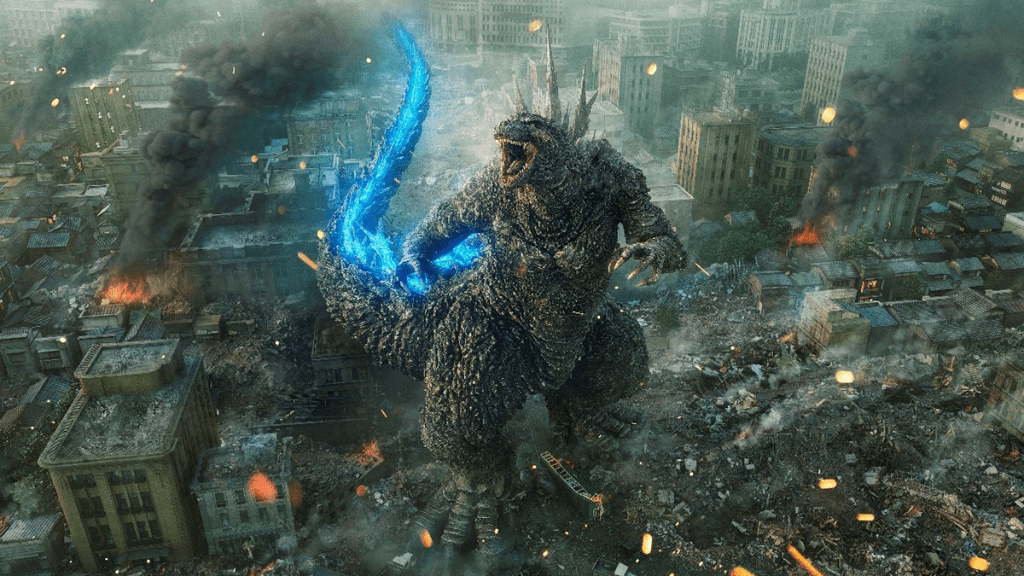ComingSoon Senior Editor Spencer Legacy spoke with Godzilla Minus One director Takashi Yamazaki and star Ryunosuke Kamiki about the kaiju movie. The duo spoke about portraying Godzilla as an unstoppable force and how the script changed over the three years it was written. The filmis now playing in theaters in the United States.
“Post war Japan is at its lowest point when a new crisis emerges in the form of a giant monster, baptized in the horrific power of the atomic bomb,” reads the official synopsis for the film.
Spencer Legacy: Godzilla really feels like an unstoppable force of nature in this movie. There have been so many different interpretations of the character, so what made this “force of nature” version the one that you wanted to portray?
Takashi Yamazaki: My main goal with my Godzilla was to make him scary. I even think that his beam is probably the strongest out of all the Godzillas. I purposely wanted to make him the scariest because that is the kind of monster where [Kōichi] Shikishima and all his friends and all these civilians have to go up against him. In each of them, they have to think. They have their own reasons to fight against him. They need to have that much more bravery. So I really felt that I could show my audience this is another way to show courage in the face of such adversity.
Speaking of that group, you spend a lot of the movie being friends with Hidetaka Yoshioka, Yuki Yamada, and Kuranosuke Sasaki. What was filming together as a group of friends like for all of you?
Ryunosuke Kamiki: It was fun working with that group, but we were out on the ocean, like the real ocean, and we were already fighting the elements, and we were also fighting Godzilla at the same time. So that group, specifically, definitely had a very strong bonding moment. [Laughs]. Just to get through, not only finding Godzilla, but those shooting days as well.
You wrote the screenplay for Godzilla Minus One over three years. Fid the characters or the story change from the inception to the final version?
Takashi Yamazaki: When I was writing the script, it was right in the middle of Covid. I definitely feel like the experiences I had during Covid are reflected in the script. Especially in the early days of Covid, we really felt that the government wasn’t helping us. So just as Godzilla reflected post-World War II Japan, Godzilla traditionally has always reflected present day, whatever decade it’s in. I really feel that what we all experienced through Covid and how society was is definitely reflected in the script. Even Shikishima … at first, his setup was supposed to be that he had shot someone and that he was carrying a different set of guilt, then he encounters Godzilla. Then we went back and said he actually didn’t shoot anyone, so that’s a different burden. Even Shikishima changed over those years.
There’s a very powerful scene where you break down crying while talking to Noriko about the first Godzilla attack your character witnessed. What was it like to film that very emotionally intense scene?
Ryunosuke Kamiki: In that scene, Shikishima is talking about something he’s never talked about to anyone about. Fundamentally, he’s not someone who externally shows what he’s feeling — his emotions. By that time, the scene comes around and he’s already been living with Noriko and Akiko for a while, so he has the comforts of his faux family at that point. I felt that that he was starting to melt a little bit, so to speak, and he could talk to her about his really sensitive past. So on a technical note, the facial expressions and the timing between lines and dialogue were some things I was really attentive about. Overall, I think I also saw it as a conversation that is very difficult to start, but once you start, it comes spilling out. Because what he’s been carrying is really at the core of Shikishima, that was a really important scene and I was really careful about how I navigated that scene.
There’s a strong theme of hope, even in very dire situations, throughout the movie. How important was it to you to always keep a feeling of hope throughout the movie?
Takashi Yamazaki: I think that hope is really what ties into the will to live. The scene where everything is annihilated … in Shikishima’s journey, that’s where he’s at his at his lowest and has no hope. So you see that reflected in the funeral scene, and that’s also when he hears about people putting together a plan to destroy Godzilla. That’s when the life in his eyes comes back and we see that journey of him coming from the bottom and rising up for the occasion.
Shikishima has so many terrible things happen to him throughout the movie, but keeps trying to move forward. What challenges came with portraying that resilience?
Ryunosuke Kamiki: Going back to the funeral scene, that is actually one specific spot that we really discussed about where Shikishima was at that time. We spoke about making it clear that he has no hope and really discussed how he does lift himself up.
Takashi Yamazaki: We did talk about that at length. When we were discussing this, there’s a component of revenge. When he first hears about the plan to defeat Godzilla. Instead of saying, “Can we defeat Godzilla,” he says, “Can we kill Godzilla?” So he was hopeful, but in a dark way, because his motivations are quite different. There’s revenge mixed in there as well. So we were very specific about discussing those points of kind of a dark hope.










